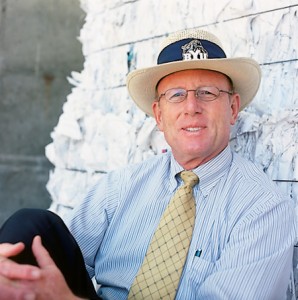
Grounds director Roy S. Peterman, ’72, leans on a 1,2000-pound bale of paper at BYU’s recycling facility.
In 1990, largely due to escalating landfill fees, BYU implemented a campus-wide recycling program. Today the program is one of the most successful in the country—a model for other universities and communities.
* Inspiration for BYU‘s recycling program: In the late 1800s, Brigham Young instructed certain missionaries who traveled the West to collect rags, which were then made into pulp for the pages of the Deseret News and new copies of the Book of Mormon. The first rag missionary, George Goddard of Provo, was called in 1867.
* Cash for trash: In its best year, 1995, the recycling program paid off all its debt and yielded a surplus of more than $220,000. The 2001 surplus was $72,000.
* Fate of uneaten BYU meat loaf: After a trip through a food pulper, leftovers are combined with other sources of “green” waste (trees, lumber, theatrical sets, etc.). The mix is cooked at 140 degrees for three to six weeks, creating a compost that, when used as a soil amendment, can reduce water usage by 33 percent.
* Weight of recycled materials in 2001: 1,234 tons of paper, 282 tons of metal, and 1,297 tons of compost.









